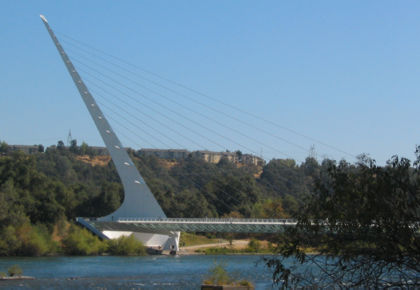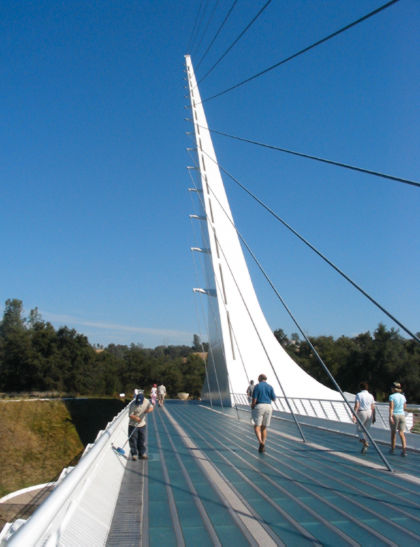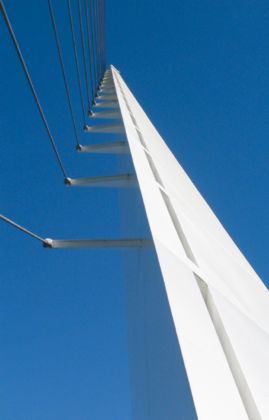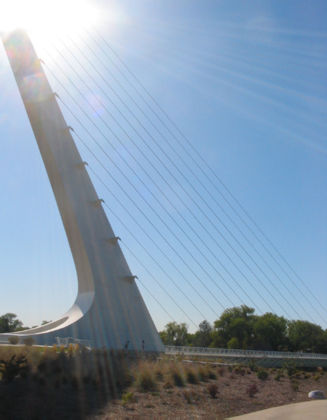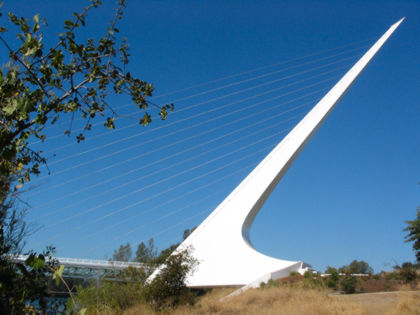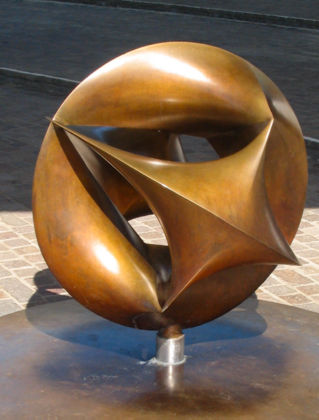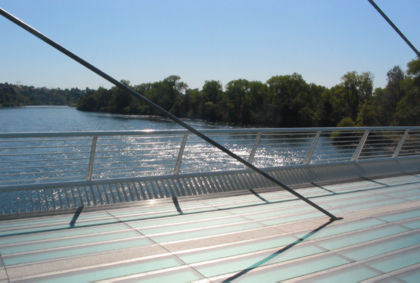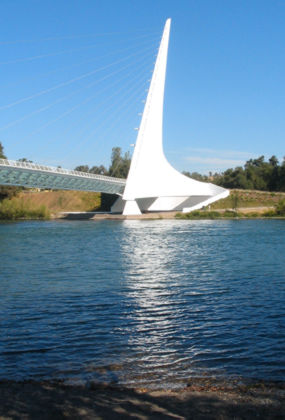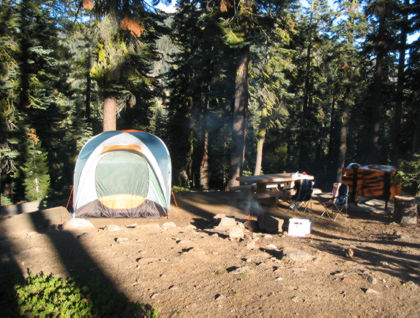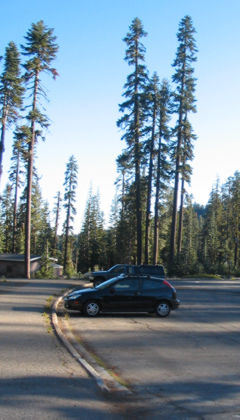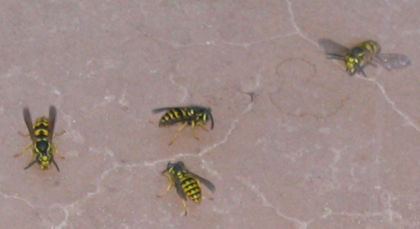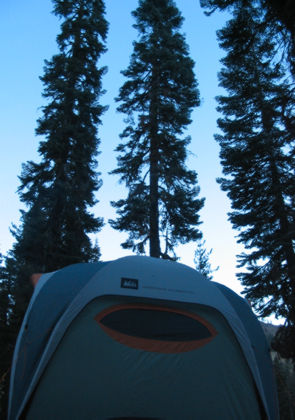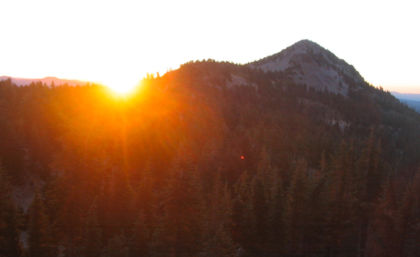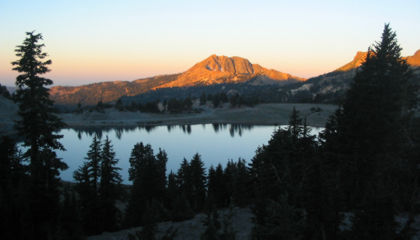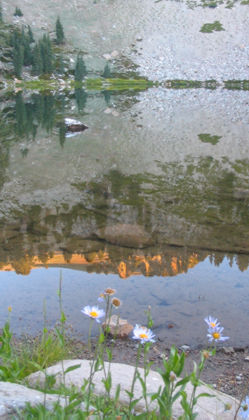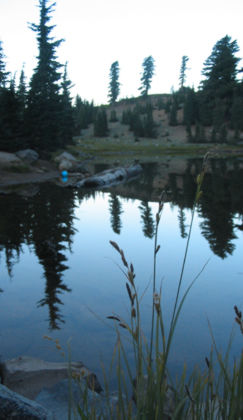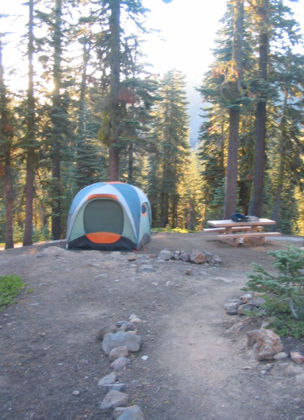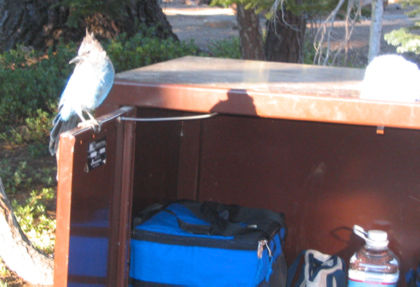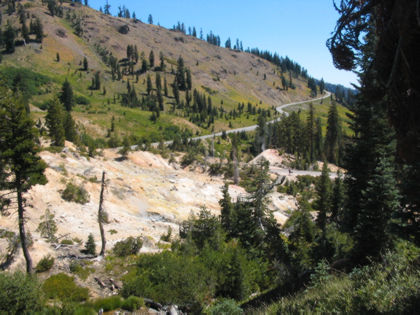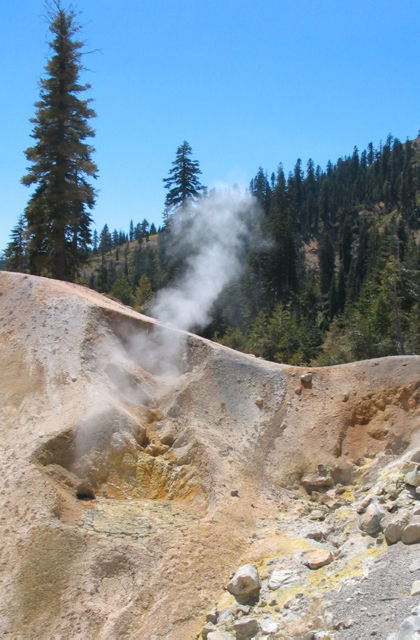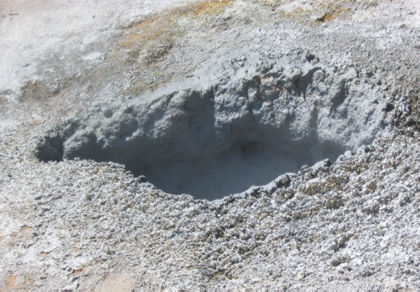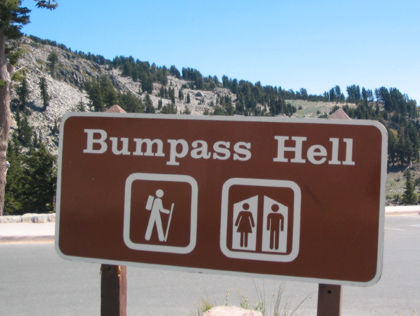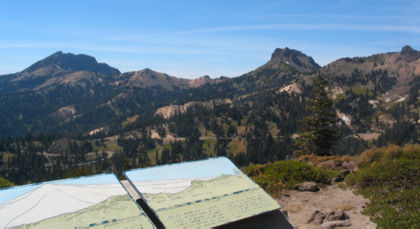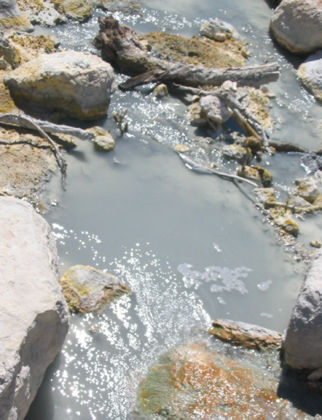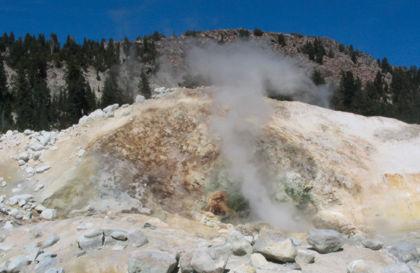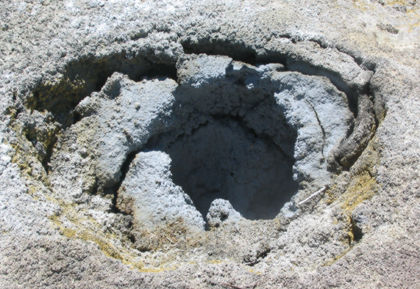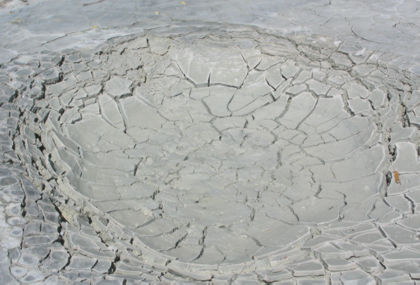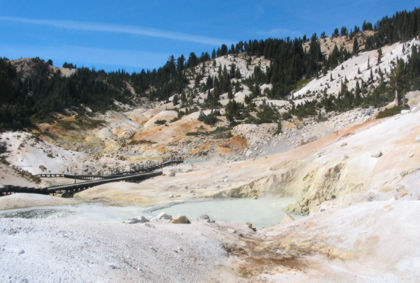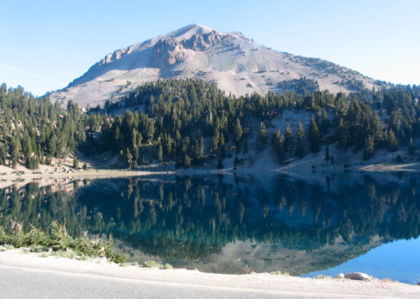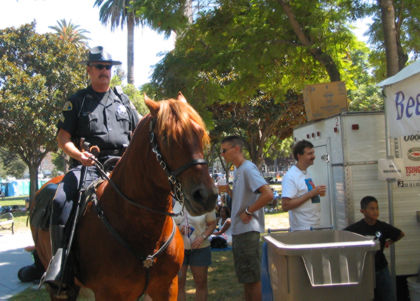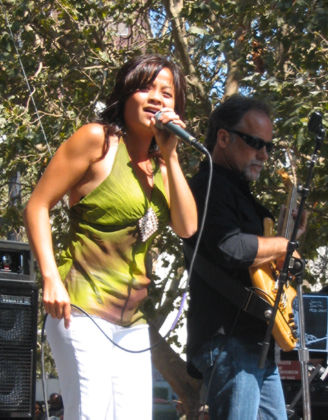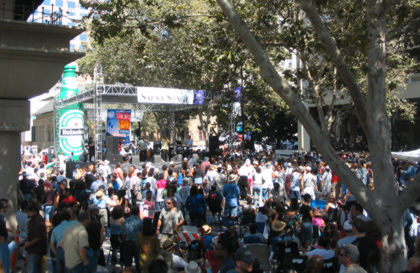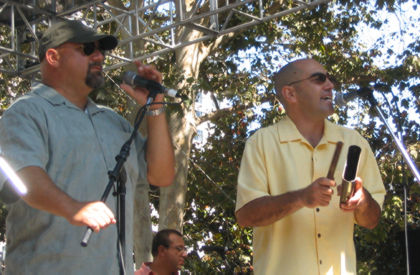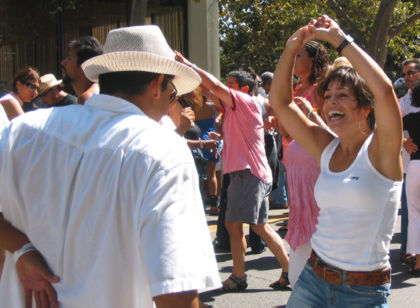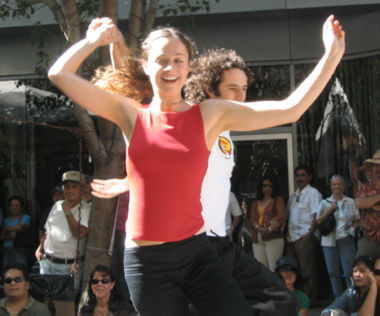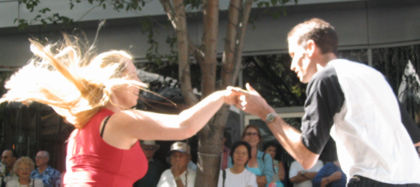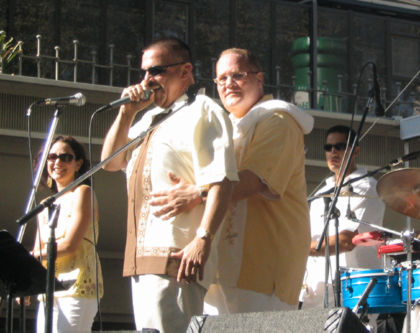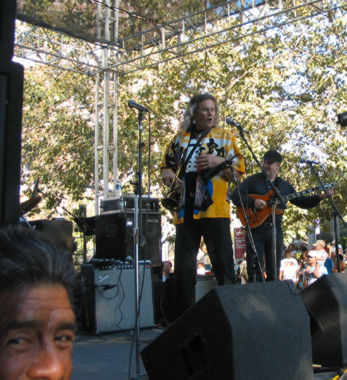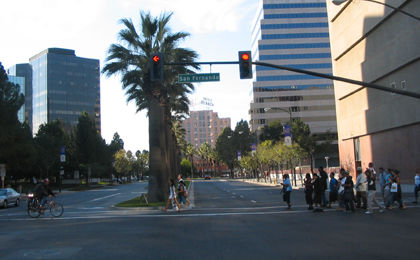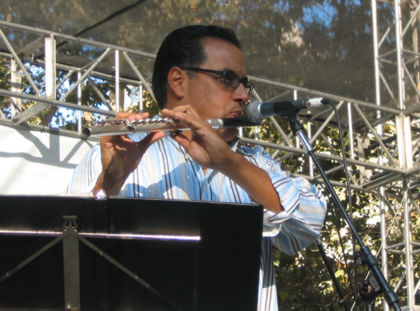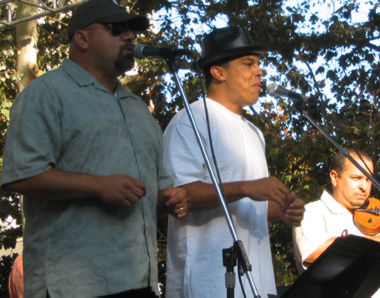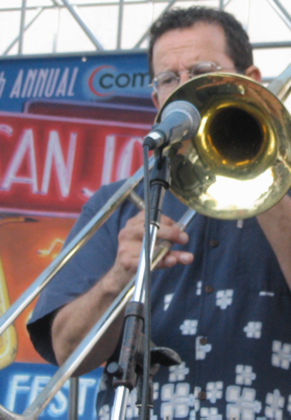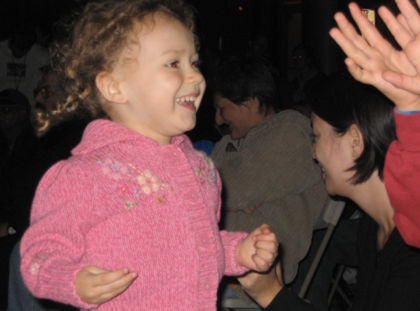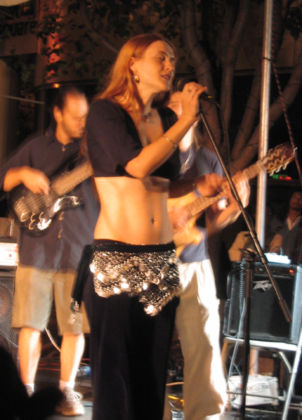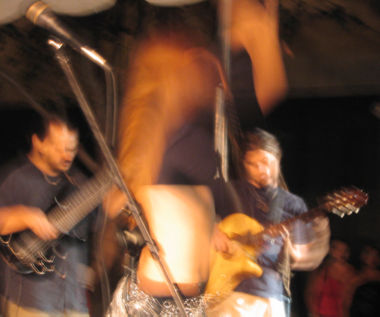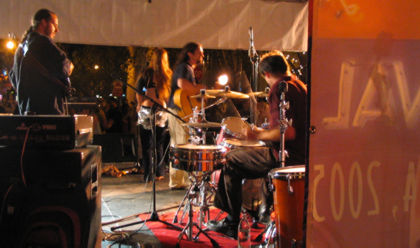Rule No. 1 for hiking up hills might well be: If you can hear your heartbeat, it’s time to slow down.
When I do training hikes, huffing it up steep trails, I know I’m not really pushing myself until my heartbeat becomes so intense that my auditory nerves start noticing the internal vibrations. If I’m feeling ambitious I’ll keep up that pace for a few minutes, till my legs start to complain or exhaustion starts to set in, then I slow down till the pumping noise subsides.
I do reasonably strenuous training hikes a couple times a week, so I’m used to the sound of my own heartbeat. I’ve trudged up most of the steepest trails in the Bay Area in the past year, but all along I’ve known that if I ever wanted to hike on the really cool trails that go up the sides of really cool mountains, I’d be in for something radically different.
I learned about that difference last week at Lassen Peak (summit: 10,462 feet), the centerpiece of Lassen Volcanic National Park, where Melissa and I camped out for a couple nights. In the high country, it takes about 30 seconds for the heart to start hollering "slow down!"
Highlights of my hike:

Here’s the sun warming the east face of Lassen Peak just after dawn of the morning I climbed it.

I was the first arrival at the Lassen Peak trailhead. It’s best to arrive early to a) beat the crowds; and b) avoid afternoon storms, which are fairly common in the summer. I couldn’t have been on the trail for more than five minutes when I noticed the audible-heartbeat thing. Walking at my usual pace, my legs weren’t feeling tired, my lungs weren’t gasping for air, but my heart was pumping like a machine gun. Amazing how the body knows to adjust to new surroundings. Lungs and large muscle groups are shouting "we need more oxygen down here, dammit," and the heart does its duty.
The only way to slow my heart was to slow my feet. I mean, yeah, I could’ve kept up my usual pace and my ticker might’ve held out all the way, but I’d be all sweaty, tired and unlikely to enjoy the scenery, which is utterly spectacular. The heart-pounding hikes can resume after my vacation’s over.

A turn in the trail during the first half-mile, right about the time when I decided to slow down and enjoy the sights. The distance and elevation change at Lassen Peak — 2000 feet over 2.5 miles — are about the same as the route I take at Mission Peak. At my comfortable high-altitude pace it would take me just about twice as long to cover the same distance/elevation at Lassen.
A bit of history, before we continue the climb: Before Mount St. Helens famously blew its top in 1980, Lassen Peak was the most celebrated volcano in the United States. It erupted in such spectacular fashion in 1914-15 that Lassen Volcanic National Park was created in its honor in 1916. By 1920 the peak had returned to its slumber. It’s not extinct — it’s just resting from the labors of blasting millions of tons of rock into its surroundings. With no sexy volcanic explosions to amaze the masses, the park draws small crowds these days, which makes it an excellent place to get away from people and their attendant noises (which will seem fairly faint once the volcano reawakens).

A twisted tree, with Brokeoff Mountain in the background.

An amazing chunk of rock juts out of the hillside. And an amazing shrub grows out of the rock.

This is about how steep the hillside would be if you were loony enough to go straight up. That rocky backbone up there is called a talus.

A long, smooth hillside, looking up toward the summit. Every winter this face is covered with ice and snow that daring skiers ride to the bottom.
Around here I started getting a bit of a headache. I assumed the altitude was to blame, so from here on up I made it a point to take a couple extra swallows of water every time I felt thirsty. Worked like a charm. Breathing isn’t the only way to get oxygen into the body, just the most obvious.

Pinnacles jut up from the rocky landscape.

Is that a cool rock, or what?

The trail nears the talus. It seems to tower above the trail, till the trail towers above it within less than a mile.

These yellow flowers look like alpine dandelions.

Two summits lie at the volcano’s rim. This is the first, about 50 feet up the trail.

A chunk of the volcano’s rim. Mount Shasta is faintly visible in the distance. It’s faint only because of the limits of my camera; it’s obvious to the naked eye.

A small ice field must be crossed to reach the second summit.

The ice is still pretty deep, compared to the height of my hiking poles.
Getting to the second summit requires a fairly tricky rock scramble. I wouldn’t say it’s dangerous, just difficult in places.

Speaking of difficulty, this little plant overcame some to grow up through a crack in the volcano at over 10,400 feet.

My scramble almost ended here, between a couple big chunks of rock. I knew there was noplace to go over to the right side of the rock, so I doubled back and found another way.

There’s this wacky-looking weather station at the second summit.

This rock is about as high as the volcano goes. I’m sure some brave souls have climbed up there; more power to ’em. I tend to be afraid of heights and I’m up as high as I need to be, thank you.

Self-portrait, which results from being the first and only person at the summit at the moment.

Another look out over the crater, whose rim is barely discernible because the volcano blew with so much violence.

OK, back down the mountain. There’s always stuff to see that you missed — but your mom would’ve seen because she’s got eyes in the back of her head.

A twisted old tree, as required. Brokeoff Mountain, in the background, used to be part of a massive volcano that towered over Lassen Peak but collapsed in on itself hundreds of thousands of years ago.

Near the end of the trail. The hike took me about four hours, three on the way up, and one on the way down.

Another look at the peak, taken later the same day.
I had been assured that Lassen Peak was an easy hike. Turns out that it was, but only because I took it really slow, drank lots of water and had great luck with the weather. The trail might best be subtitled "Altitude for Newbies" — a good place to prepare for hiking up there where the air begins to thin.
After Labor Day, it’s five days at Yosemite, where everything worth seeing has altitude issues. Check back after the 12th of September for more updates.





